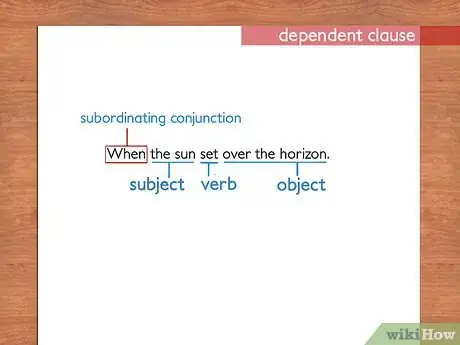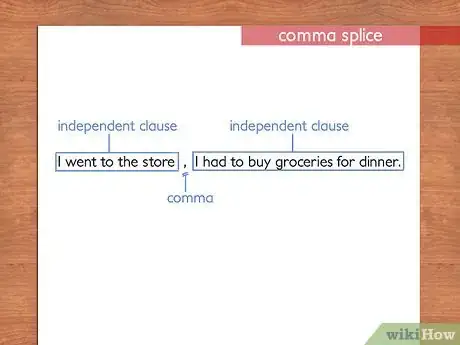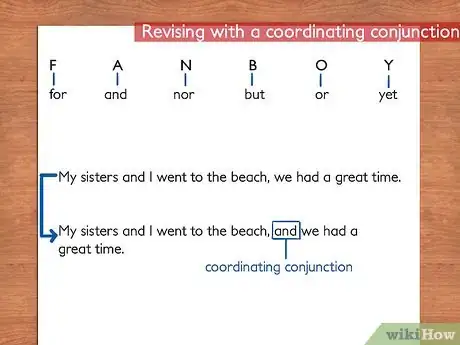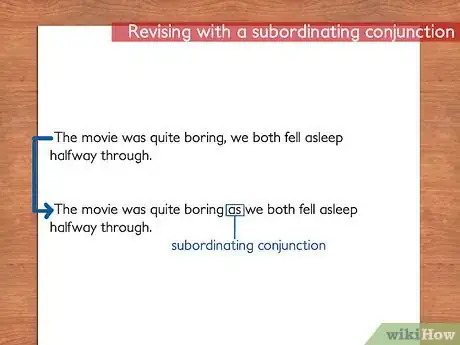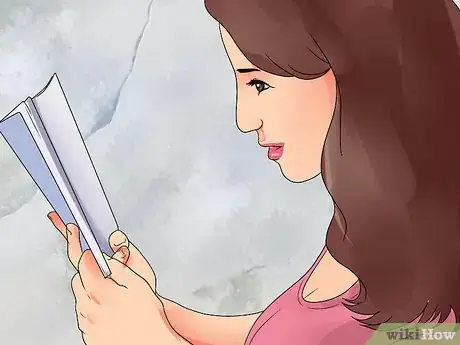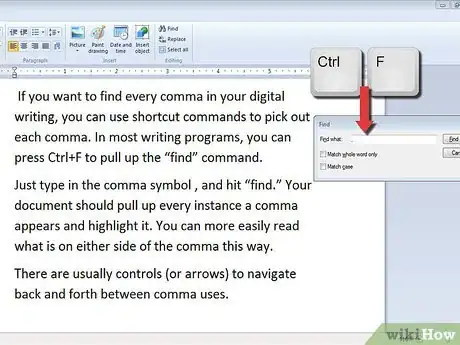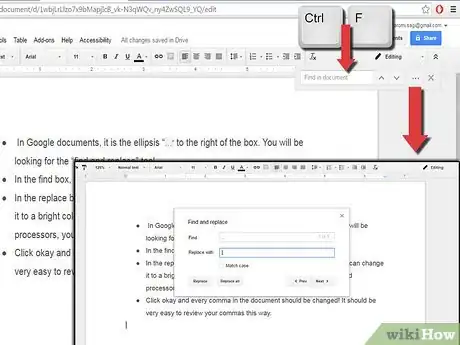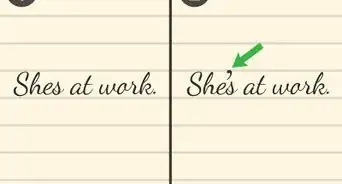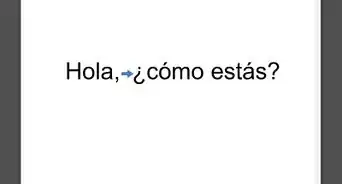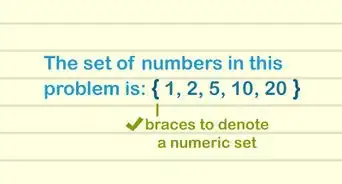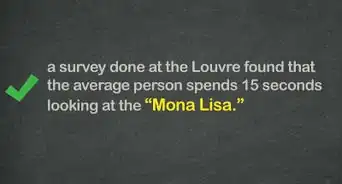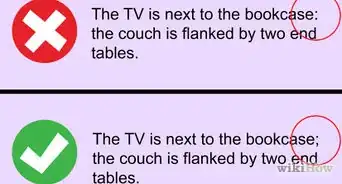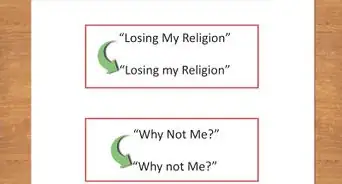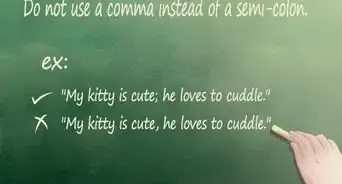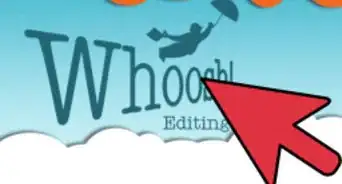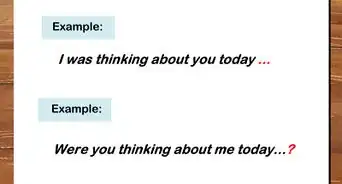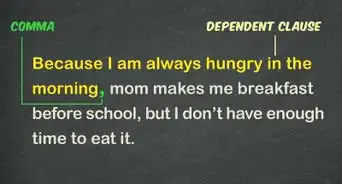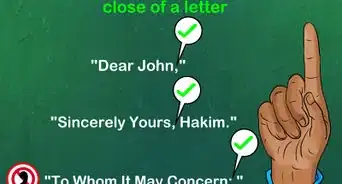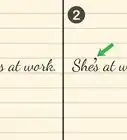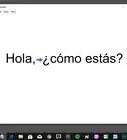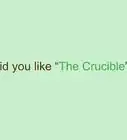This article was co-authored by Tristen Bonacci. Tristen Bonacci is a Licensed English Teacher with more than 20 years of experience. Tristen has taught in both the United States and overseas. She specializes in teaching in a secondary education environment and sharing wisdom with others, no matter the environment. Tristen holds a BA in English Literature from The University of Colorado and an MEd from The University of Phoenix.
There are 8 references cited in this article, which can be found at the bottom of the page.
This article has been viewed 72,917 times.
A comma splice happens when two independent clauses are joined together with a comma. The comma splice is a type of run-on sentence, where two independent clauses are joined together without the use of a conjunction and only with a comma.[1] There are a number of ways to recognize and fix this grammatical issue.
Steps
Understanding Sentence Structures
-
1Recognize an independent clause. An independent clause, also known as a sentence, has a subject, a verb, and expresses a complete thought.[2] It must be able to stand on its own and make logical sense. For example:
- ”Apples are yummy.” In this independent clause, “apples” is the subject, and “are” is the verb. The sentence, as a whole, provides the reader with enough information for it to make logical sense.
- ”The student’s backpack was filled with heavy textbooks.” In this independent clause, “the student’s backpack” is the subject. “Was filled” is the verb. “With heavy textbooks” gives the sentence meaning and provides extra description.
- ”Sebastian’s coffee was too hot to drink.” In this independent clause, “Sebastian’s coffee” is the subject. “Was too hot” is the verb phrase. “To drink” is an infinitive (a verb in its most natural form, before it is changed to show tense); this infinitive adds additional information.
- ”The long and winding road took us to the spooky, derelict, run-down castle high above the city.” In this long independent clause, “the long and winding road” is the subject, and “took” is the verb. Just because it is long and has a lot of commas does not make it a comma splice or run-on sentence!
-
2Learn to identify a dependent clause. A dependent clause, in contrast to its independent brother, may contain both a subject or verb but does not express a complete thought.[3] For example:
- ”When the sun set over the horizon.” In this case, “the sun” is the subject, and “set” is the verb, but the reader is left to wonder what the actual meaning/action is. This is an example of an adverbial clause, which is a dependent clause that begins with a subordinating conjunction.
- ”If the singer doesn’t show up for her concert.” Again, the reader is left to wonder “what happens” At the end of the clause. “Singer” is the subject and “does not show” is the verb phrase, but it does not express a complete thought.
- ”Why you did that.” This is a nominal dependent clause that starts with an interrogative (who, whom, what, which, whoever, when, where, how, and why). It contains a subject (you) and a verb (did), but still is missing information to allow it to stand on its own.
Advertisement -
3Find the comma splice. Now that you can identify an independent clause and a dependent clause, you must now be able to recognize when two independent clauses are joined together with a comma and a coordinating conjunction (e.g., “or,” “and,” or “but”). For example:[4]
- ”I went to the store, I had to buy groceries for dinner.” In this case, identify the two subjects. In both independent clauses, it is “I.” Then, identify the verbs. In the first sentence it is “went” and in the second, “had to buy.” Now you can clearly see where the comma shouldn’t be; in between the two subjects!
- ”When the sun set over the horizon, the penguins went to sleep, they were quite tired.” In this comma splice, it may be a bit trickier to decide where the comma splice begins because there is a dependent clause acting as an introductory phrase. “When the sun set over the horizon” is the dependent clause with the subject, sun, and the verb, set. However, it cannot stand on its own. Therefore, the comma splice appears between “the penguins went to sleep” and “they were quite tired.”
- ”The mountain climbers, if they can make it out alive, will be worldwide heroes!” In this case, we can identify the subject as “the climbers” and the verb “will be.” The dependent clause in the middle “if they make it out alive,” is extra information, called an appositive. In this case, even though there are two commas, there is no comma splice!
Fixing Comma Splices
-
1Fix comma splices with punctuation. To fix a comma splice, you can insert a period, exclamation point, or semicolon where the comma splices the two independent clauses. Remember to capitalize the first word in the second independent clause if not using a semicolon. For example:
- ”The dancers were beautiful, they were very well-coordinated.” This can be fixed by “The dancers were beautiful. They were very well-coordinated.” Or “The dancers were beautiful! They were very well-coordinated.” Or “The dancers were very beautiful; they were very well-coordinated.”
- ”When I sip coffee, I think of my mother, she made the best coffee.” This can be fixed by “When I sip coffee, I think of my mother. She made the best coffee!” Or “When I sip coffee, I think of my mother. She made the best coffee!” Or “When I sip coffee, I think of my mother; she made the best coffee.”
- ”I never thought about my career, when I was your age, I only thought about dating.” You can fix this by “I never thought about my career. When I was your age, I only thought about dating.” Or “I never thought about my career. When I was your age, I only thought about dating!” Or “I never thought about my career; when I was your age, I only thought about dating.” This comma splice is a bit different, however. You can put the punctuation on either side of the dependent clause “when I was your age.” For example: “I never thought about my career, when I was your age. I only thought about dating.” Or, you can change up the sentence altogether by saying: "When I was your age, I never thought about my career. I only thought about dating."
-
2Revise the sentences with a coordinating conjunction. An easy way to remember coordinating conjunctions is with the acronym “FANBOY.” This stands for: for, and, nor, but, or yet. To fix a semicolon, you can add a coordinating conjunction after the comma in the splice.[5]
- ”My sisters and I went to the beach, we had a great time.” You can add a coordinating conjunction to fix this comma splice and to give additional information. For example: “My sisters and I went to the beach, and we had a great time.” Perhaps if you and your sisters do not get along or do not like the beach, you might say: “My sisters and I went to the beach, yet we had a great time!” Each coordinating conjunction adds subtle meaning, so be careful on which you use.
- ”The large dog jumped the fence, he was chasing the cat.” You can fix this by adding: “The large dog jumped the fence, for he was chasing the cat.”
- ”The coffee house’s music was very hypnotic, it distracted me from studying.” You can fix this by: “The coffee house’s music was very hypnotic, but it distracted me from studying.” Or “The coffee house’s music was very hypnotic, and it distracted me from studying.”
-
3Add a subordinating conjunction. Subordinating conjunctions are used to add complexity to two independent clauses.[6] Subordinating conjunctions include: because, therefore, after, although, as, as if, even if, since, that etc. There are many more subordinating conjunctions! To fix a comma splice with a subordinating conjunction, remove the comma and replace it with the conjunction.
- ”The movie was quite boring, we both fell asleep halfway through.” You can fix this with a subordinating conjunction such as: “The movie was quite boring as we both fell asleep halfway through.”
- ”The food was bland, it had no seasoning.” To fix this, you might write: “The food was bland because it had no seasoning.”
- ”The table was wobbly, our drinks slid off of it when the waitress hit it.” To fix it with a subordinating conjunction, you might say something like: “The table was wobbly therefore our drinks slid off of it when the waitress hit it.” Or, you can add the subordinating phrase somewhere else in the sentence, such as: “Our drinks slid off the table when the waitress hit it, therefore, our table was wobbly.”
Finding and Fixing Comma Splices in Your Own Writing
-
1Write first, read later. A good tip for revising is to not worry about fixing punctuation issues until you have a draft. Worrying about punctuation while you write may frustrate you and interrupt your writing flow. While your goal is not to write a comma splice, you can always go back and fix mistakes. Focusing on each and every comma placement may cause more stress and worse writing.[7]
- The more your write and practice, the better you’ll get at eliminating comma splices.
-
2Read your writing. When you want to revise your draft for comma splices, start reading. Read one sentence at a time and read it out loud.[8] This will help you slow down and to read what is actually on the page. It is easy for your brain to insert words that aren’t there or automatically fix mistakes.[9] Even professional writers have this problem!
- Another tip is to read your draft backward. That is, start with the last sentence in your draft and read it (forward). Then, move to the next to the last. This will help scramble your brain a bit to help you read what is there. You are more likely to see mistakes this way.
- You can use a pointer (such as the tip of your pencil) to pick out your commas. Read what you have written on either side of the comma. Identify the subject, verb, and object.[10] Ask yourself: “Are these independent clauses on either side of this comma?” If yes, then you have a comma splice.
- Remember, you do not need a comma for a simple non-compound sentence.[11]
-
3Use keyboard shortcuts. If you want to find every comma in your digital writing, you can use shortcut commands to pick out each comma. In most writing programs, you can press Ctrl+F to pull up the “find” command.
- Just type in the comma symbol (,) and hit “find.” Your document should pull up every instance a comma appears and highlight it. You can more easily read what is on either side of the comma this way.
- There are usually controls (or arrows) to navigate back and forth between comma uses.
-
4Conditionally format your writing. To highlight all of your commas in your writing at once, you can conditionally format your writing to highlight or change the color of every comma in your writing. This is a great way to look over your whole document at once.[12]
- To do this, pull up the find command (Ctrl+F). Then, find the advanced options. In Microsoft Word, it is the down arrow on the right hand side of the box. In Google documents, it is the ellipsis ... to the right of the box. You will be looking for the “find and replace” tool.
- In the find box, write the comma symbol ,
- In the replace box, write the comma symbol but change the font. You can change it to a bright color, like red, so you can see it more easily. In most word processors, you can also highlight it or make it bold, italicize it, etc.
- Click okay and every comma in the document should be changed! It should be very easy to review your commas this way.
Expert Q&A
-
QuestionHow do you know if there is a comma splice?
 Tristen BonacciTristen Bonacci is a Licensed English Teacher with more than 20 years of experience. Tristen has taught in both the United States and overseas. She specializes in teaching in a secondary education environment and sharing wisdom with others, no matter the environment. Tristen holds a BA in English Literature from The University of Colorado and an MEd from The University of Phoenix.
Tristen BonacciTristen Bonacci is a Licensed English Teacher with more than 20 years of experience. Tristen has taught in both the United States and overseas. She specializes in teaching in a secondary education environment and sharing wisdom with others, no matter the environment. Tristen holds a BA in English Literature from The University of Colorado and an MEd from The University of Phoenix.
Licensed English Teacher A lot of times, you can find comma splices by reading the sentences out loud. If the comma doesn't sound natural when you're reading out the sentence, it probably doesn't belong there.
A lot of times, you can find comma splices by reading the sentences out loud. If the comma doesn't sound natural when you're reading out the sentence, it probably doesn't belong there. -
QuestionHow do I fix this comma splice? "In the evenings, she often watched TV, even when reruns were the only programs being shown, she preferred to read instead."
 Moi123456Community Answer"In the evenings, she often watched TV. Even when reruns were the only programs being shown, she preferred to read instead."
Moi123456Community Answer"In the evenings, she often watched TV. Even when reruns were the only programs being shown, she preferred to read instead." -
QuestionIs the following sentence a comma splice or run-on sentence? "For instance, you want to purchase a car, you may walk up to an outdoor booth."
 DonaganTop AnswererIt's both. As explained above, a comma splice is a run-on sentence.
DonaganTop AnswererIt's both. As explained above, a comma splice is a run-on sentence.
References
- ↑ https://www.iup.edu/writingcenter/writing-resources/punctuation/comma-splices.html
- ↑ https://owl.purdue.edu/owl/general_writing/punctuation/independent_and_dependent_clauses/index.html
- ↑ https://owl.purdue.edu/owl/general_writing/punctuation/independent_and_dependent_clauses/index.html
- ↑ https://courses.lumenlearning.com/suny-fmcc-english1/chapter/comma-splices/
- ↑ https://advice.writing.utoronto.ca/revising/comma-splices/
- ↑ https://www.iup.edu/writingcenter/writing-resources/punctuation/comma-splices.html
- ↑ http://writingcenter.unc.edu/handouts/revising-drafts/
- ↑ Tristen Bonacci. Licensed English Teacher. Expert Interview. 21 December 2021.
- ↑ http://wonderopolis.org/wonder/does-your-brain-autocorrect/
- ↑ Tristen Bonacci. Licensed English Teacher. Expert Interview. 21 December 2021.
- ↑ Tristen Bonacci. Licensed English Teacher. Expert Interview. 21 December 2021.
- ↑ https://support.office.com/en-us/article/Find-and-replace-text-or-other-items-50b45f26-c4b8-4003-b9e4-315a3547f69c

